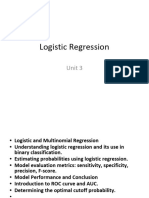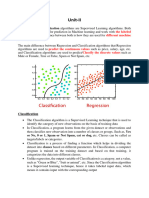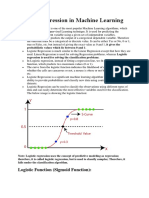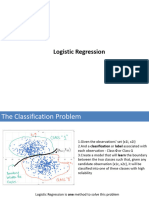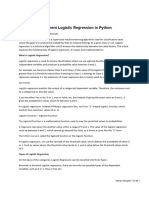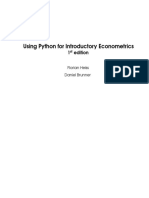0% found this document useful (0 votes)
27 views8 pagesDay.12 Logistic Regression
Logistic Regression is a statistical method for binary classification that predicts outcomes based on input features using the sigmoid function to estimate probabilities. It is advantageous for its simplicity and interpretability but has limitations in handling complex relationships and is suitable only for binary or multinomial classification. Key evaluation metrics include accuracy, precision, recall, and F1-score, which help assess model performance in various scenarios.
Uploaded by
pandeyharsh124421Copyright
© © All Rights Reserved
We take content rights seriously. If you suspect this is your content, claim it here.
Available Formats
Download as PDF, TXT or read online on Scribd
0% found this document useful (0 votes)
27 views8 pagesDay.12 Logistic Regression
Logistic Regression is a statistical method for binary classification that predicts outcomes based on input features using the sigmoid function to estimate probabilities. It is advantageous for its simplicity and interpretability but has limitations in handling complex relationships and is suitable only for binary or multinomial classification. Key evaluation metrics include accuracy, precision, recall, and F1-score, which help assess model performance in various scenarios.
Uploaded by
pandeyharsh124421Copyright
© © All Rights Reserved
We take content rights seriously. If you suspect this is your content, claim it here.
Available Formats
Download as PDF, TXT or read online on Scribd
/ 8
